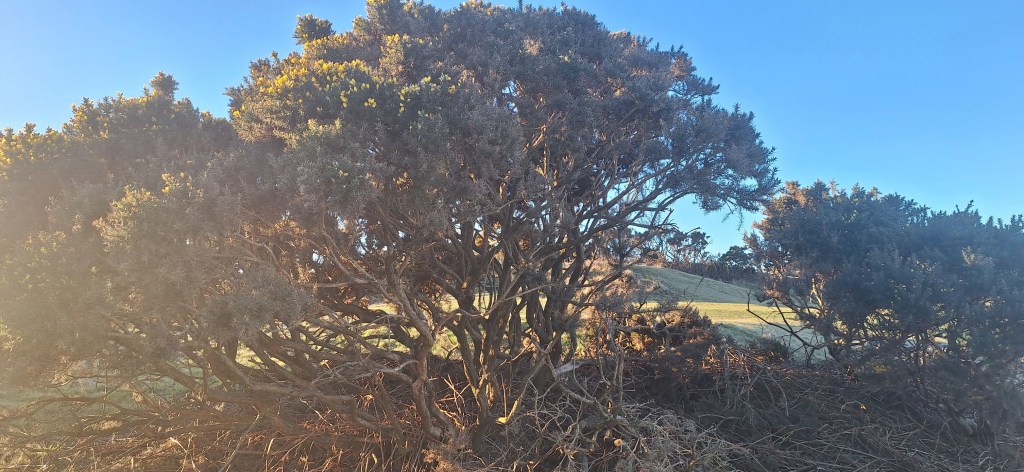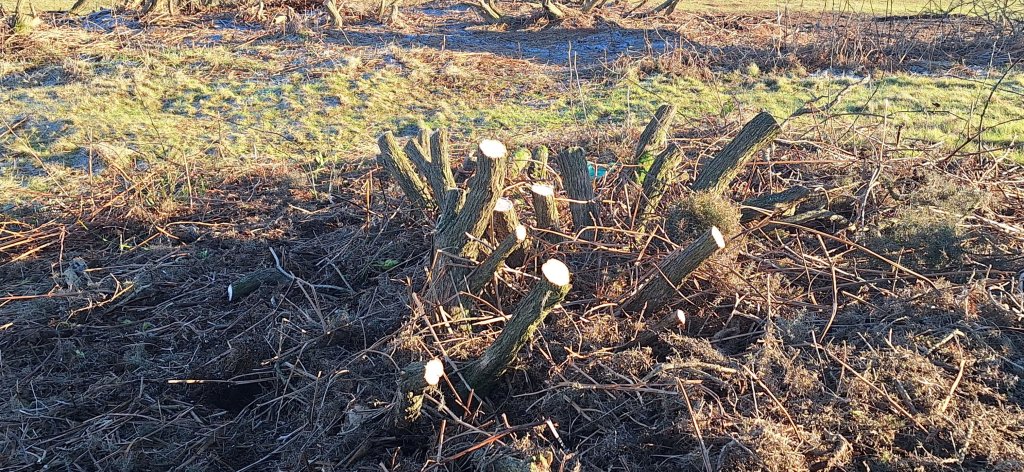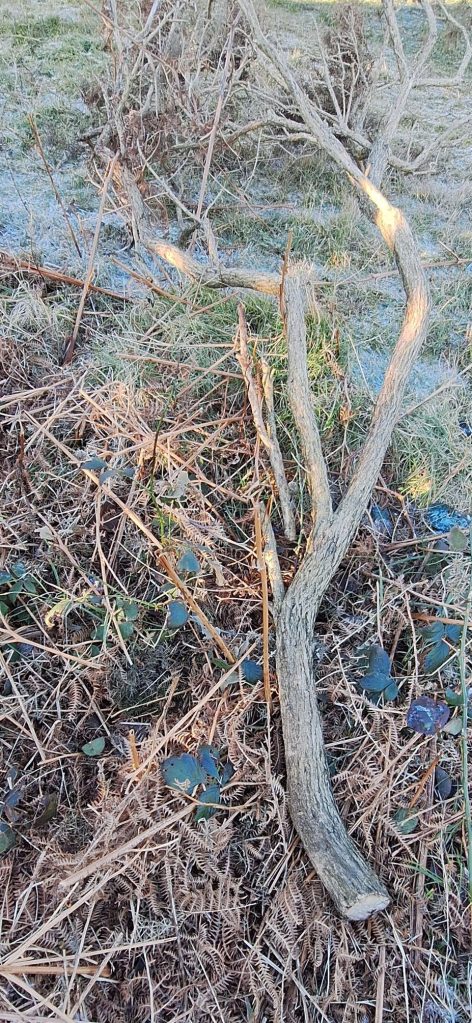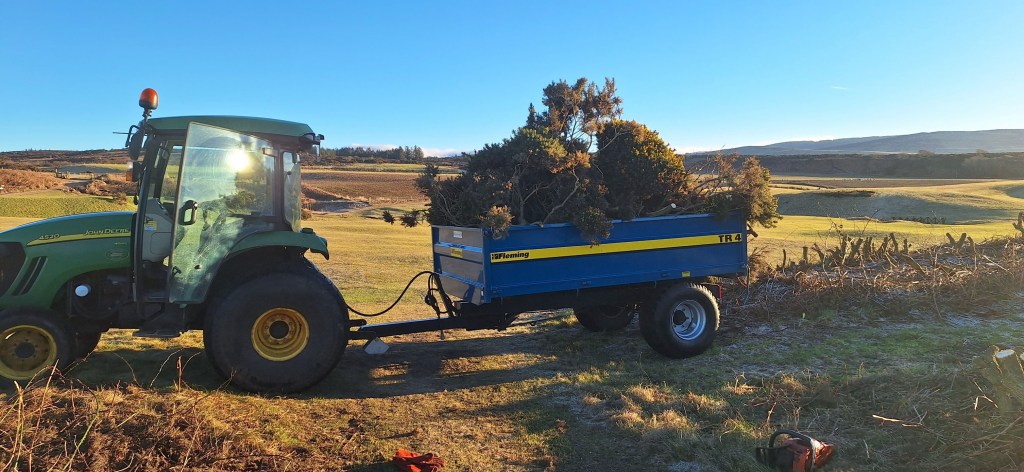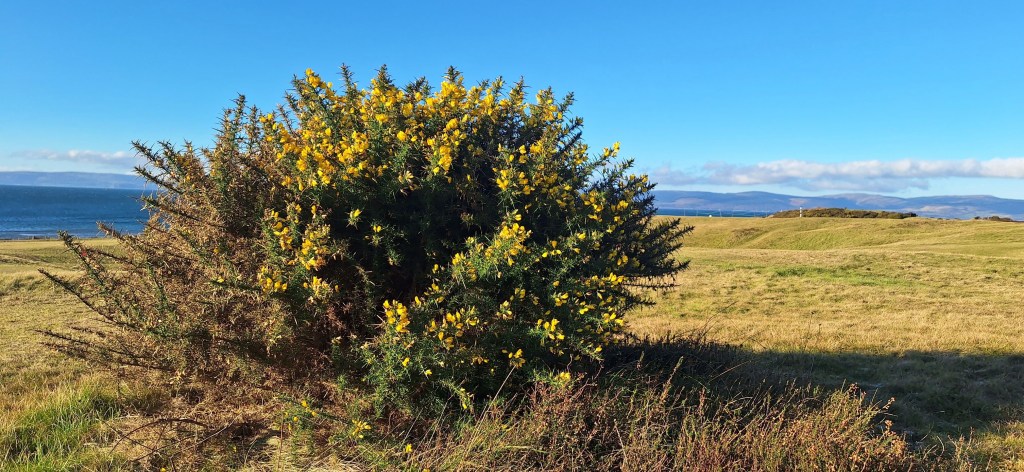The Road to Recovery – 19th March 2025
Overseeding
Last week we continued with our over seeding programme, using the finer fescues native to our links environment.
Thirty years ago the greens were predominately Poa Annua (annual meadow grass). Poa is a prolific self-seeder through the summer months, resulting in very slow greens – something that we have been actively eradicating through years of overseeding, in favour of the finer fescues.
The composition of the sward is now far more of this natural links grass that we want to see on our greens. These deep rooted perennials are also more disease and drought resistant.
The purchase of the Vredo Disc Seeder has allowed us to overseed the greens all summer with no surface disruption, and also allows for a very good germination rate.
Top Dressing
We have been lightly top dressing the greens over the winter when weather conditions allow. Further top dressing was applied last week after the over seeding. The top dressing then has to dry out sufficiently to allow brushing in to the canopy (we do not brush the top dressing off).
Further overseeding and top dressing will be carried out in the coming weeks. We hope for favourable weather conditions to get quick germination, but this relies on a helping hand from mother nature.
Germination sheet
A germination sheet has been placed on the 3rd green. We hope this will hasten the germination of the new seed, allowing quicker recovery and for the green to be back in play at the earliest opportunity.




Greens Recovery – 7th March 2025
Tackling Disease and Focusing on Recovery
We’ve had a tough time with our greens recently due to an autumn disease outbreak. The damp, dull, and mild conditions of October and early November created the perfect environment for Microdochium pathogens to thrive.
We have taken proactive steps to address this issue and sought advice from the R&A agronomists. They have supported our efforts so far and provided additional suggestions to both promote recovery and the increase resilience of our turf against future disease outbreaks. Here’s a detailed outline of the recovery plan we have implemented over the past few months and our strategy moving forward:
Micro Tining using 8mm tine. This is a vital process that helps improve the greens’ health by allowing better air and water movement through the soil and relieving compaction. The holes created also provide a good environment for young seedlings to establish. (see next point)
Over seeding using pot seeding and dimple seeding methods for separate applications of bent and fescue seeds to promote robust growth, and supplementing the above.
Cane switching. After seeding, we are switch caning extremely thoroughly to help the seeds settle into the newly created pots. This meticulous process ensures optimal seed-to-soil contact.
Top Dressing. In addition to the other recovery measures, we incorporate top dressing with sand. This process involves applying a thin layer of sand over the greens. The sand fills in any minor imperfections, helps to firm the surface, and improves soil aeration. This practice is essential for maintaining smooth and even greens, which are vital for optimal play conditions. We discussed the sand source, and whilst the R&A have not physically viewed our own sand they concur that this is highly likely to be the best material to use. This will be discussed during the visit.
Brushing the greens. Regularly brushing the greens is crucial to maintaining their health. This practice helps remove dew and other moisture from the leaves, reducing the likelihood of disease and promoting better air circulation. This will be of particular importance in the autumn.
Germination sheet. To further support germination, (with the better, less windy, weather) we will be using a germination sheet. The sheet will create a microclimate that fosters seedling growth. A contact and systemic fungicide will be applied prior to the renovation – the active ingredient, Difenoconazole and Fludioxonil, will help protect against further fungal issues which could happen if the turf is sweating under the germination sheet. Stewart and the team have been briefed and understand that the sheet should be removed at the earliest opportunity and immediately if any mycelium is observed. 4 days would hopefully suffice.
Nitrogen support. Once germination occurs, the young plants will be supported using limited amounts of nitrogen to encourage healthy development.
Aquaduct Flex. The application of surfactants, such as Aquaduct Flex, is prudent to enhance water distribution and uptake in the soil. Stewart is looking to source some of this specialist material.
The greens are starting to show signs of recovery, and some more good weather will aid this process. You may have noticed the over the last week that the course has greened up – this is not purely down to nature, the greens, tees and fairways have been sprayed with a mix of seaweed and iron.
Whilst we are in a difficult situation we are not alone. The R&A were able to share photos of other golf clubs that have had a difficult autumn. This is not an excuse, but it is correct that the membership have a full understanding of the biotic and abiotic stresses that fine turf endured across the UK in October/November.
Looking ahead, a preventative fungicide application will be applied in autumn 2025. Whilst not an absolute guarantee that disease can be avoided the likelihood and severity will be significantly reduced.
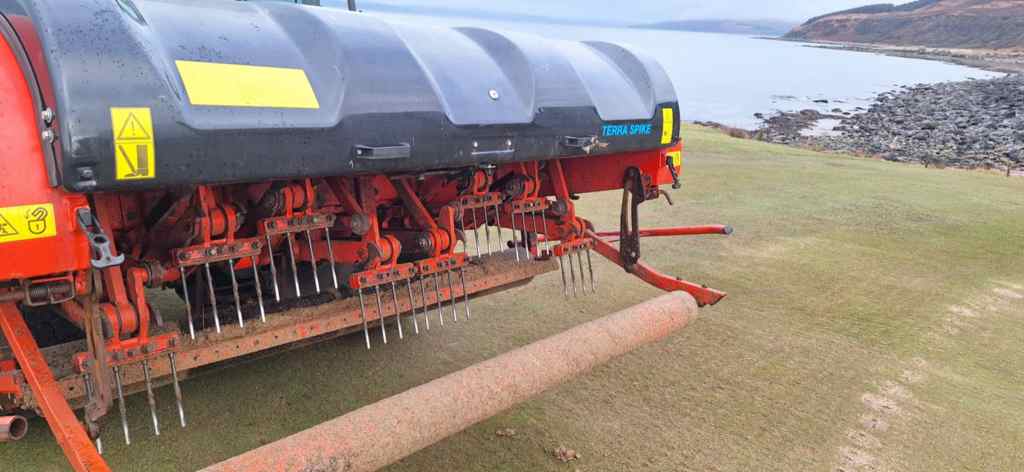
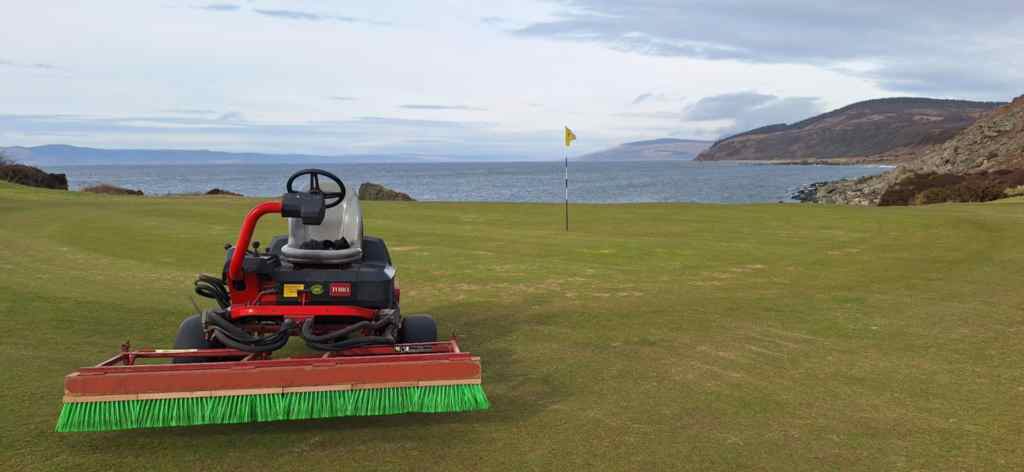
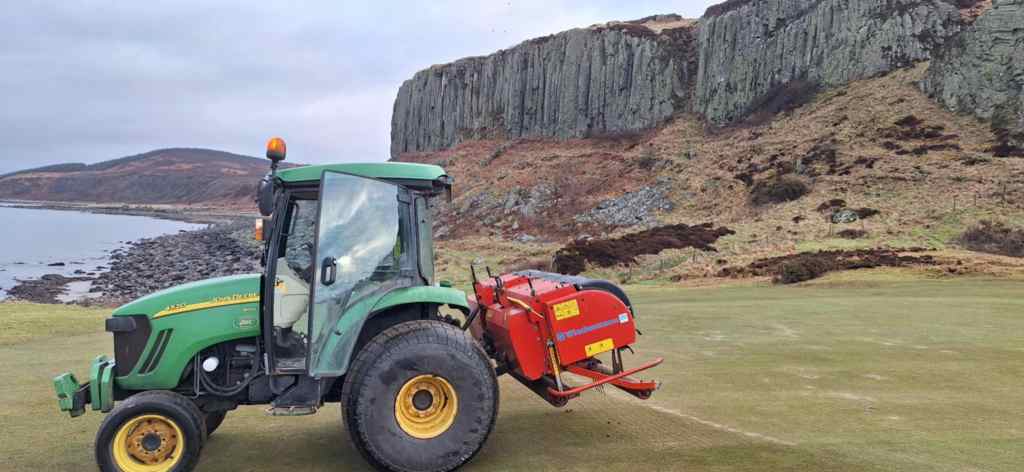
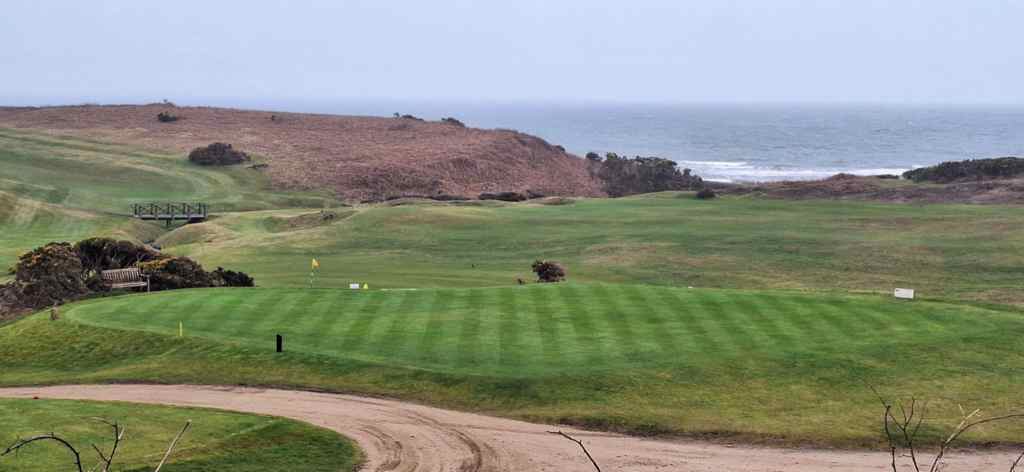
Whin (Gorse) Management – 4th March 2025
Whin (Gorse) management continues over the Winter. In the olden days the animals grazing the course kept the growth down.
The whins have become too leggy and woody and will eventually get blown over. The management plan involves cutting them down low to allow regrowth. The plan is to keep the gorse more bush like with the last photo showing how the whins will look in 2 years.
